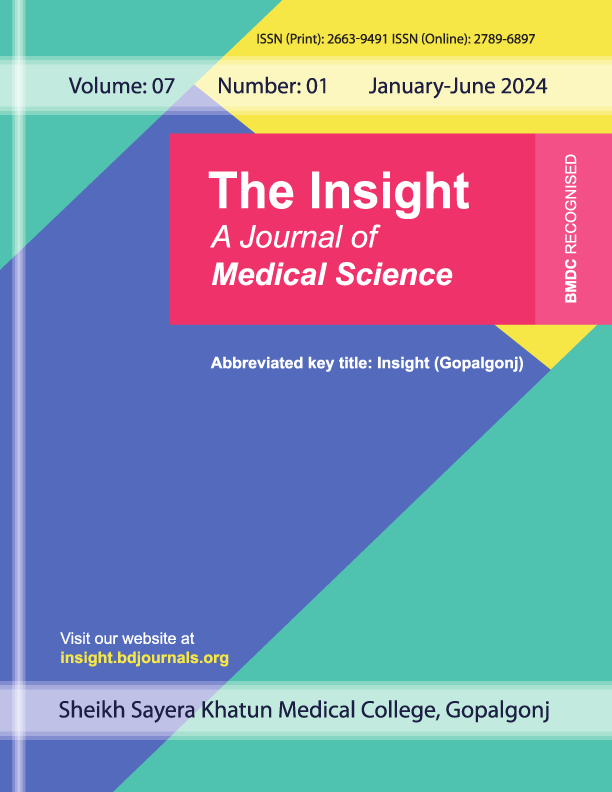Echocardiography Parameters of Diastolic Function in Patients with Atrial Fibrillation
Publiée 2024-11-15
Mots-clés
- Atrial Fibrillation,
- Diastolic Dysfunction,
- Echocardiography
(c) Copyright The Insight 2024

Ce travail est disponible sous la licence Creative Commons Attribution 4.0 International .
Comment citer
Résumé
Introduction: Echocardiographic assessment of left ventricular diastolic function in patients with atrial fibrillation is variable from beat to beat, and the left atrium is enlarged despite normal atrial pressures, making estimation based on the usual guidelines difficult and inaccurate. The introduction of additional echocardiographic parameters is therefore necessary, which is challenging and leads to different results. Objective: To find out the study various aspects of diastolic function in patients with atrial fibrillation. Methods & Materials: It was a hospital based prospective cross-sectional observational study conducted at Bangabandhu Sheikh Mujib Medical College Hospital, Faridpur, Bangladesh from January to June 2023. A total of 100 patients were included in the study. All consecutive patients attending above mentioned places of study based on inclusion criteria and during period of study were enrolled. Results: Total of 100 patients were studied. About one third (35.0%) had diastolic dysfunction. Ratio of E/e’(14.65 ± 2.21 Vs 7.66 ± 1.18) , E/Vp (1.57 ± 0.14 Vs 1.20 ± 0.11), isovolumetric relaxation time (53.06 ± 13.82ms Vs 89.33 ± 9.88ms) and deceleration time of pulmonary venous diastolic wave (203.09 ± 26.13ms Vs 292.25 ± 36.32ms) were significantly different in patients with diastolic dysfunction compared to patients without diastolic dysfunction with sensitivity of 90.6%, 84.4%, 81.2% and 78.1% respectively. Conclusion: Diastolic dysfunction is a common phenomenon in patients with atrial fibrillation. Echocardiographic parameters such as E/e` ratio, isovolumic relaxation time, E/Vp ratio, and diastolic lung wave delay time have been found to be highly sensitive in detecting diastolic dysfunction.



